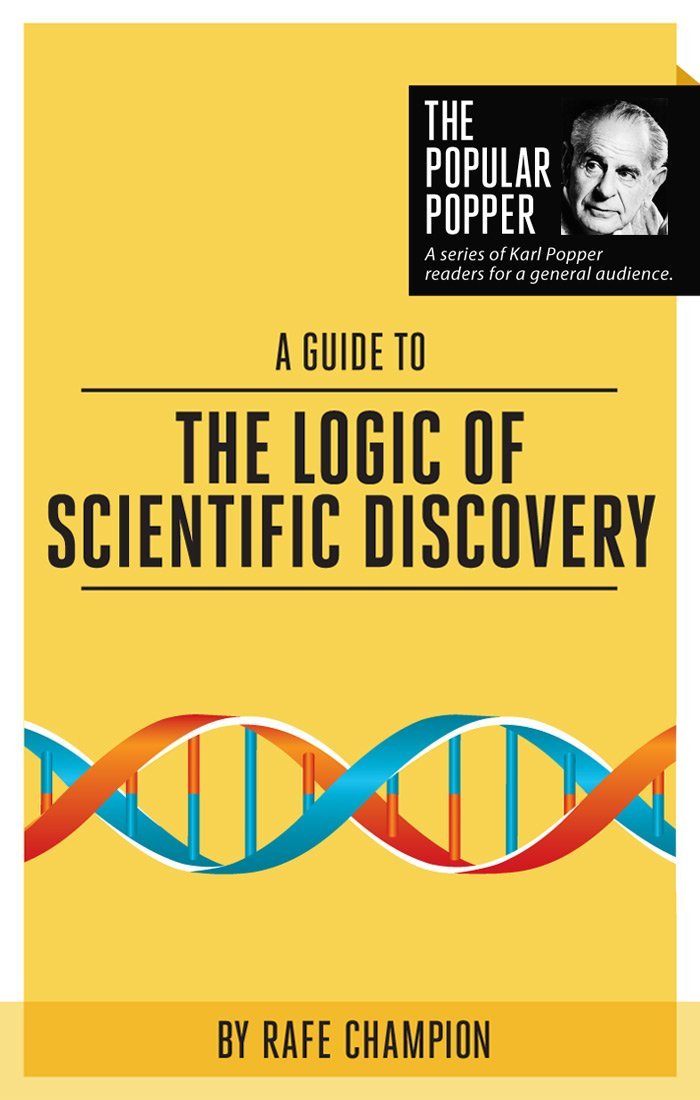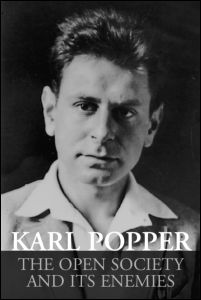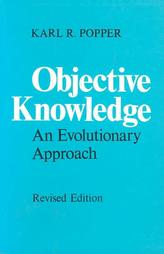This book makes interesting reading in parallel with Popper’s introductory lectures on the philosophy of science. Jim Watson’s book The Double Helix demonstrated how Watson and his colleague Francis Crick engaged in Popperian “conjecture and refutation”; here Crick did even better because he reflected on the way they worked and he especially explained the role of criticism. For a more complete summary of the book, see here.
It is amusing to note that neither he nor Watson were officially working on DNA. Crick was writing a thesis on the X-ray diffraction of polypeptides and proteins (despite being 30 years old he had no doctorate due to the wartime disruption of his studies) and Watson went to Cambridge to help Kendrew crystallize a big protein (myoglobin).
“Jim and I hit it off immediately, partly because our interests were astonishingly similar and partly, I suspect, because a certain youthful arrogance, ruthlessness, and an impatience with sloppy thinking came naturally to both of us” (64).
They had no data of their own “Jim and I never did any experimental work on DNA, though we talked endlessly about the problem. Following Pauling’s example we believed that the way to solve the structure was to build models. The London workers [Wilkins and Franklin] followed a more painstaking approach.” (65)
There is an interesting account of the papers that they wrote, and the very cautious claims that they made about the helix in the first Nature paper in April 1953. Crick wanted to put the genetic implications up front but Watson was afraid that over-ambitious claims could rebound against them if they turned out to be wrong. “He suffered from periodic fears that the structure might be wrong and that he had made an ass of himself.” (66).
Crick devoted a few paragraphs to Rosalind Franklin, suggesting that there is no feminist issue, she had a different conception of research methods and was not prepared to think beyond the data in hand. Her personal disagreements with Wilkins were more of a problem; she was not interested in DNA (Willkins told her to work on it, and she thought he just wanted her to work as an assistant rather than as an independent researcher). She was about to leave the unit to work on Tobacco Mosaic virus with Bernal. She died five years later, long before the Nobel was awarded.
Some people, especially inductivists and feminists, think that Crick and Watson cheated by being so competitive and unconventional in what is often depicted as a race for the Nobel Prize. Crick’s defence was they were just in a hurry to get the truth, or at least to get a result and this was a matter of enthusiasm rather than competition (they were just trying to help, like good government workers).
“In our enthusiasm for the model-building approach we not only lectured Maurice Wilkins on how to go about it but even lent him our jigs for making the necessary parts of the model. In some ways I can see that we behaved insufferably (they never did use our jigs) but it was not all due to competitiveness. It was because we passionately wanted to know the details of the structure.”
He regarded that enthusiasm as a big plus in their favour, and he nominated a couple of others. They had no external pressure to make progress so they could attack the problem intensively for a while and then turn their minds to other things (so they didn’t go stale or become frustrated by slow progress).
“Our other advantage was that we had evolved unstated but fruitful methods of collaboration, something that was lacking in the London group. If either of us suggested a new idea the other, while taking it seriously, would attempt to demolish it in a candid but non hostile manner. This turned out to be quite crucial. In solving scientific problems of this type, it is almost impossible to avoid falling into error. [as noted] Now, to obtain the correct solution of a [complex] problem usually requires a sequence of logical steps. If one of these is a mistake, the answer is often hidden, since the error usually puts one on completely the wrong track. It is therefore extremely important not to be trapped by one’s own mistakes.” (70) [my emphasis].







Further excerpts from Francis Crick’s “What Mad Pursuit: A personal view of scientific discovery” (1989) are quoted below. I note in particular Crick’s warning (also addressed by Popper separately in detail) against falling too much in love with simplicity, Occam’s razor:
Page 16 “I’ve known a lot of people more stupid than you who have made a success of it.”
P 24 “Even a cursory look at the world of living things shows its immense variety.”
“The second property of almost all living things is their complexity.”
P59 “The failure on the part of my colleagues to discover the alpha helix made a deep impression on Jim Watson and me. Because of it I argued that it was important not to place too much reliance on any single piece of experimental evidence. It might turn out to be misleading”.
“Jim was a little more brash, stating that no good model ever accounted for all the facts, since some data was bound to be misleading if not plain wrong. A theory that did fit all the data would have been ‘carpentered’ to do this and would thus be open to suspicion.”
p65 “Our first attempt at a model was a fiasco”.
P67 “What was important was not the way it was discovered but the object discovered – the structure of DNA itself. You can see this by comparing it with almost any other scientific discovery. Misleading data, false ideas, problems of personal relationships occur in much if not all scientific work.”
P70 “In solving scientific problems of this type, it is almost impossible to avoid falling into error.”
“Now, to obtain the correct solution to a problem, usually requires a sequence of logical steps. If one of these is a mistake, the answer is often hidden, since the error usually puts one completely on the wrong track. It is therefore extremely important not to be trapped by one’s mistaken ideas. The advantage of intellectual cooperation is that it helps jolt one out of false assumptions.”
P109 “The best a theorist can hope to do is to point an experimentalist in the right direction, and this is often best done by suggesting what directions to avoid. If one has little hope of arriving, unaided, at the correct theory, then it is more useful to suggest which class of theories are unlikely to be true, using some general argument about what is known of the nature of the system.”
P113 “It is all too easy to make some plausible simplifying assumptions, do some elaborate mathematics that appear to give a rough fit with at least some experimental data, and think one has achieved something. The chance of such an approach doing anything useful, apart from soothing the theorist’s ego, is rather small, and especially so in biology. Moreover I have found, to my surprise, that most theorists do not appreciate the difference between a model and a demonstration, often mistaking the latter for the former.
In my terminology, a ‘demonstration’ is a ‘don’t worry’ theory. That is, it does not pretend to approximate to the right answer, but it shows at least a theory of that general type can be constructed.”
P115 “I cannot help thinking that so many of the ‘models’ of the brain that are inflicted on us are mainly produced because their authors love playing with computers and writing computer programs and are simply carried away when a computer produces a pretty result. They hardly seem to care whether the brain actually uses the devices incorporated in their ‘model’.
A good model in biology, then, not only should address the problem in hand but if at all possible should serve to unite evidence from several different approaches so that various sorts of tests can be made of it.”
P139 “Physics is also different because its results can be expressed in powerful, deep, and often counterintuitive general laws. There is really nothing in biology that corresponds to special and general relativity, or quantum electrodynamics, or even such simple conservation laws as those of Newtonian mechanics: the conservation of energy, of momentum, and of angular momentum. Biology has its “laws,” such as those of Mendelian genetics, but they are often only rather broad generalizations, with significant exceptions to them. The laws of physics, it is believed, are the same everywhere in the universe. This is unlikely to be true of biology. We have no idea how similar extra-terrestrial biology (if it exists) is to our own. We may certainly consider it likely that it too will be governed by natural selection, or something rather like it, but even this is only a plausible guess.
What are found in biology are mechanisms, mechanisms built with chemical components and that are often modified by other, later mechanisms added to the earlier ones. While Occam’s razor is a useful tool in the physical sciences, it can be a very dangerous implement in biology. It is thus very rash to use simplicity and elegance as a guide in biological research. While DNA could be claimed to be both simple and elegant, it must be remembered that DNA almost certainly originated fairly close to the origin of life when things were necessarily simple or they could not have got going.
Biologists must constantly keep in mind that what they see was not designed, but rather evolved. It might be thought, therefore, that evolutionary arguments would play a large part in guiding biological research, but this is far from the case. It is difficult enough to study what is happening now. To try to figure out what happened in evolution is even more difficult. Thus evolutionary arguments can usefully be used as hints to suggest possible lines of research, but it is highly dangerous to trust them too much.”
P141 ” The principal error I see in most current theoretical work is that of imagining that a theory is really a good model for a particular natural mechanism rather than being merely a demonstration – a “don’t worry” theory. Theorists almost always become too fond of their own ideas, often simply by living with them for so long. It is difficult to believe that one’s cherished theory, which really works rather nicely in some respects, may be completely false.
The basic trouble is that nature is so complex that many quite different theories can go some way to explaining the results. lf elegance and simplicity are, in biology, dangerous guides to the correct answer, what constraints can be used as a guide through the jungle of possible theories? It seems to me that the only really useful constraints are contained in the experimental evidence. Even this information is not without its hazards since, as we have seen, experimental facts are often misleading or even plain wrong. It is thus not sufficient to have a rough acquaintance with the experimental evidence. But rather a deep and critical knowledge of many different types of evidence is required, since one never knows what type of fact is likely to give the game away.”